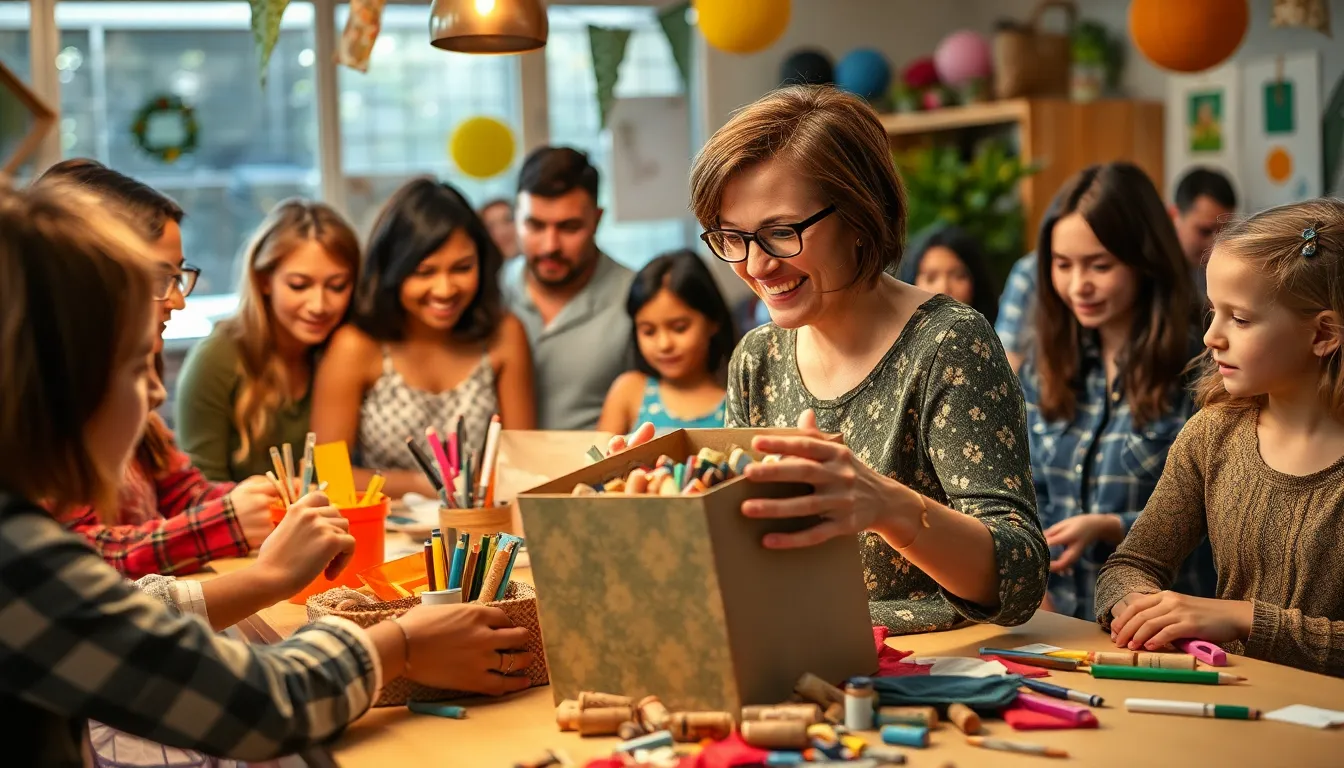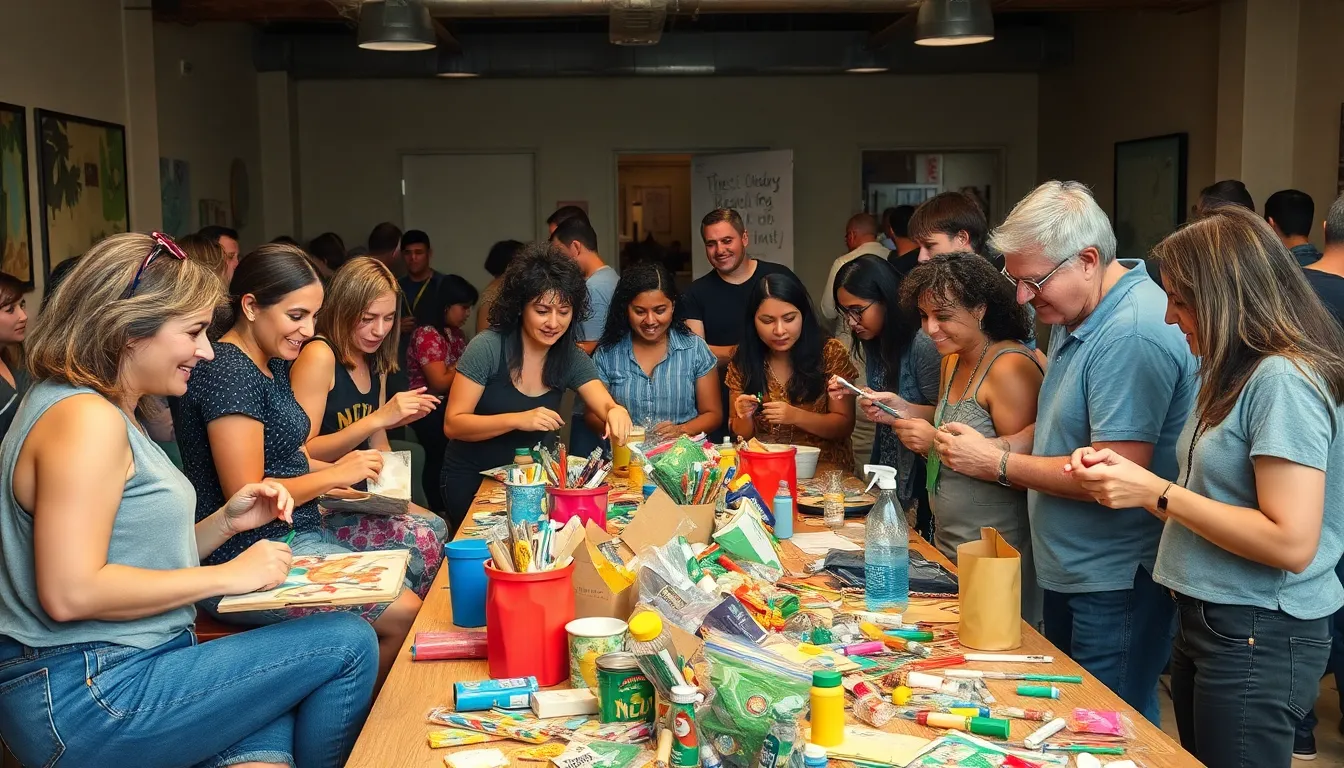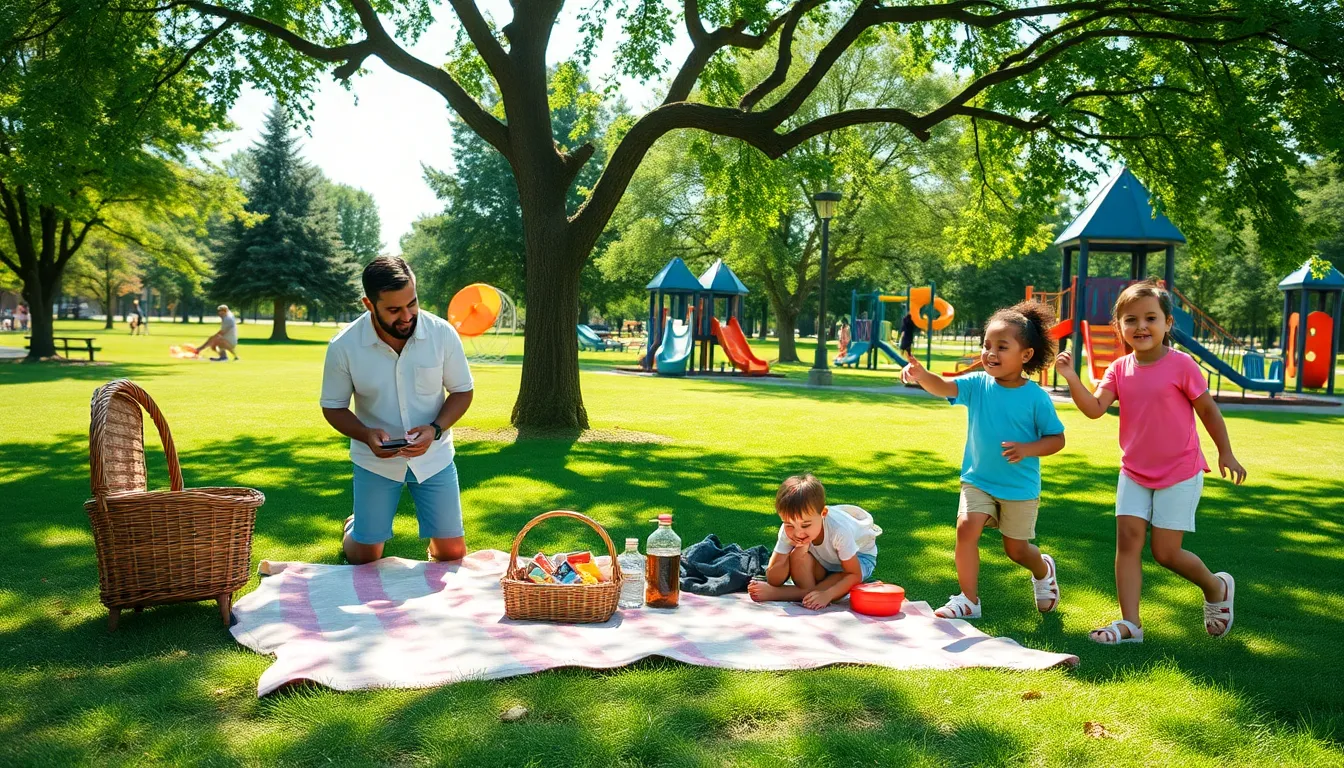Imagine turning your trash into treasure while having a blast with friends. That’s the magic of a recycling craft night! It’s not just about saving the planet; it’s about unleashing creativity, sharing laughs, and maybe even discovering hidden talents you never knew you had. Who knew that old cereal box could become a chic organizer or that wine cork could transform into a trendy keychain?
Table of Contents
ToggleOverview of Recycling Craft Night
Recycling craft night combines creativity with environmental awareness. Participants transform everyday waste into functional art while enjoying time with others.
Purpose and Goals
The primary aim of recycling craft night focuses on promoting sustainability. This event encourages individuals to view trash as a resource, fostering innovation and resourcefulness. Crafting from discarded items supports waste reduction and environmental conservation. Social connections thrive during these gatherings, allowing participants to share ideas and techniques. Crafting also serves as a platform for skill development, resulting in unique creations. Events can lead to awareness about recycling practices and sustainability’s importance. These elements contribute to a positive community experience.
Who Can Participate
Recycling craft night welcomes everyone, regardless of age or skill level. Families often attend together, providing a fun learning environment for children. Friends and neighbors might join to strengthen connections and develop new hobbies. Various community groups, like schools and local organizations, often host events for members. These gatherings promote inclusivity while encouraging diverse participation. Individuals seeking eco-friendly activities find this a perfect opportunity to engage. Ultimately, recycling craft night appeals to those interested in creativity and sustainability.
Benefits of Recycling Craft Night
Recycling craft night provides numerous advantages for participants and the environment. Engagement in this activity contributes to both sustainability and community building.
Environmental Impact
Sustainable practices stem from repurposing materials that would otherwise end up in landfills. Crafting with recyclables reduces waste and lowers carbon footprints significantly. Choosing local craft materials helps minimize transportation emissions. This creative approach teaches individuals about waste management and the importance of resource conservation. Transforming everyday items into useful products demonstrates the potential of recycled materials effectively. Participants gain a deeper understanding of environmental issues through hands-on experience while developing eco-friendly habits that extend into their daily lives.
Community Engagement
Fostering social connections occurs naturally at recycling craft night. People from different backgrounds gather with a shared interest in creativity and sustainability. Collaboration enhances relationships as participants work together on projects. Engaging in these craft nights promotes teamwork, communication, and the sharing of skills. Local businesses benefit from increased traffic as they sponsor or supply materials for events. Community spirit strengthens as attendees showcase their creations, inspiring others to participate. Learning about recycling practices together cultivates a culture of environmental awareness and stewardship in the community.
Planning a Successful Recycling Craft Night
Planning involves careful consideration of materials and space. Participants enjoy a well-organized environment with easy access to supplies.
Selecting Materials
Choosing materials sets the foundation for creativity. Collect items like cardboard boxes, plastic containers, fabric scraps, or wine corks. Gather assorted craft supplies such as scissors, glue, paints, and markers too. Recycling items promotes resourcefulness and encourages participants to think outside the box. Encourage attendees to bring their own materials as well. This not only expands the range of projects but also fosters personal investment in the crafting process.
Setting Up the Space
Creating an inviting space enhances the crafting experience. Designate a large table or workspace where participants can spread out their materials comfortably. Arrange seating to promote interaction and collaboration among attendees. Adequate lighting ensures everyone can see their projects clearly. Provide bins for collecting scraps and organizing materials, emphasizing cleanliness throughout the night. Consider having a display area for finished projects, inspiring everyone to showcase their creativity.
Ideas for Craft Projects
Recycling craft night encourages creativity with various project ideas. Participants can explore both simple DIY crafts and advanced craft projects using recycled materials.
Simple DIY Crafts
Creating simple DIY crafts offers immediate gratification. Empty glass jars transform into charming candle holders or flower vases. Old t-shirts become reusable tote bags with a few snips and knots. Paper towel rolls easily convert into bird feeders when decorated and filled with seeds. Moreover, participants can craft greeting cards from scrap paper, adding personal touches for friends and family. All these projects require minimal tools and time, making them perfect for beginners.
Advanced Craft Projects
Advanced craft projects challenge creativity while enhancing crafting skills. Participants can design furniture from reclaimed wood, resulting in unique coffee tables or benches. Scrap metal art creations allow for expression through sculpture or garden decor. Fabric scraps can combine to create intricate quilts, showcasing vibrant patterns and textures. Glass bottle planters serve as eco-friendly gardening solutions, adding green elements to spaces. Each project fosters deeper engagement with materials, promoting resourcefulness as participants repurpose what would otherwise become waste.
Tips for an Enjoyable Experience
Crafting can be more enjoyable with the right approach. Creating a sense of comfort and encouragement sets the stage for a successful recycling craft night.
Creating a Welcoming Atmosphere
Start with an inviting setup. Use cheerful decorations and soft lighting to enhance the ambiance. Arrange comfortable seating to facilitate interaction among participants. Incorporate a refreshment area with snacks and drinks to keep energy high. Foster a sense of community by encouraging early arrivals to engage in conversation. Display completed projects to spark inspiration. Mentioning recycling goals during the event also maintains focus on purpose. Emphasizing collaboration over competition makes everyone feel valued.
Encouraging Creativity
Inspire participants to explore their ideas. Provide diverse materials, including paper, plastics, and fabric, to stimulate their creativity. Suggest brainstorming sessions to encourage sharing of unique concepts. Encourage everyone to think outside the box, allowing individuals to build upon one another’s suggestions. Introduce themed challenges to create excitement and spur imagination. Highlight that mistakes are part of the creative process; they often lead to unexpected outcomes. Acknowledge all contributions, which fosters a playful environment while promoting personal expression.
Conclusion
Recycling craft night offers an exciting opportunity to blend creativity with sustainability. Participants not only create unique items but also foster a sense of community and environmental responsibility. This engaging event allows individuals to explore their artistic side while learning the importance of repurposing materials.
By transforming everyday waste into functional art, attendees contribute to a greener planet and develop eco-friendly habits. The collaborative spirit of recycling craft night encourages friendships and inspires others to join the movement. With thoughtful planning and a welcoming atmosphere, these gatherings can become a cherished tradition that promotes both creativity and conservation.









